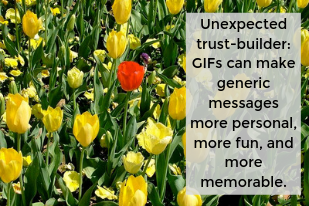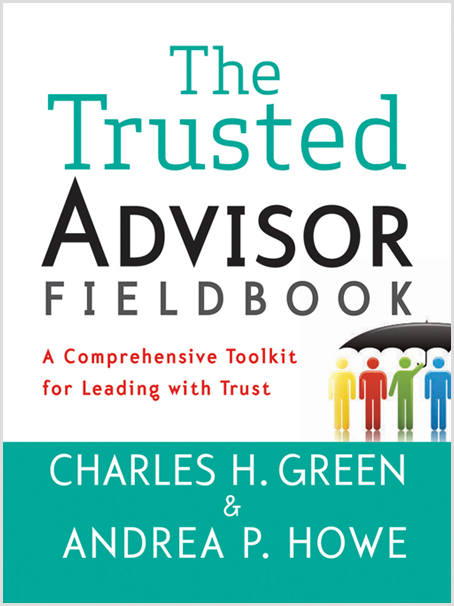This post is part of our Monthly-ish Tips series.

There’s a “modern” communication tool that’s become really popular in recent years. You’d think I’d be too old to appreciate them (although I learned from Wikipedia that they actually date back to the 80s, so maybe not). Instead, I’m enamored of them. Humor me for a moment while I share the trust-building applications of … GIFs.
(Millennials, please skip this paragraph.) GIF stands for Graphics Interchange Format. If you’re not sure what a GIF is, I think of it as an animated picture or a mini-video. If you’re not sure how to pronounce “GIF,” you’re not alone as it’s a hotly debated topic (though apparently its originators say it’s “jif”). If you’re not sure you should bother with GIFs, consider that (1) GIF was the 2012 Word of the Year, according to the Oxford American Dictionaries—so they’re kind of a big deal—and (2) used creatively and appropriately, GIFs can definitely help you on the trust front.
Here are three trust-building applications that have come to my personal attention in the last couple of months:
- Make generic messages more personal. I recently connected with colleague Ian Brodie on LinkedIn. (We had featured a story of Ian’s in The Fieldbook, so I was surprised to discover that we weren’t already connected.) In response to my request, I got a customized and personalized GIF of Ian waiving at me, with the text, “Thanks for connecting.” While that might sound a little hokey in the re-telling, it was a fun surprise in the moment. And it was definitely memorable.
- Share something about yourself. Not long ago I was looking up information about a senior leader at THRUUE, a strategy and culture consultancy where I happen to know a lot of great people. On the “Our Team” page, I got a little surprise when I moused over her photo and was greeted by a GIF. Then I discovered everyone has GIFs associated with their bios. I spent way more time on the page than I normally would have, and had fun doing it. (When was the last time you had fun looking at the website of a professional services firm?)
- Deliver tough messages with a little less edge. I was frustrated a few weeks ago when I wasn’t getting the answers I needed from a client, in spite of repeated attempts. We were running out of time to take effective action, and my stress levels were rising rapidly. Even my best draft caveats seemed a little snarky. So I sent a GIF along with my text message—an image of a kid hyperventilating into a paper bag. It made it a lot easier to say what I needed to say, and I’m guessing it made it easier to hear. I got an immediate reply, and an apology.
If a picture is worth 1,000 words, a little animated picture is surely worth more. Even better if the GIF packs a humorous punch, as many of them do.
Make It Real
This week, experiment with using GIFs, or some kind of creative visual, in your communications. If you’re already GIF-savvy, use them in a way that’s out of the box for you.
Learn More

Read about personalization in an age of scale, from our friends at Trusted Advisor Associates, or brush up on how to create high-touch environments when you’re working at a distance in Chapter 27 of The Trusted Advisor Fieldbook.
Andrea Howe
Latest posts by Andrea Howe (see all)
- A lesson from my own trust “fail” in my first-ever client meeting - April 15, 2024
- Why choosing silence in the face of awkwardness can be a trust tragedy - March 21, 2024
- What NOT to do when you think you’re being ghosted - February 21, 2024
